Just like bars and pubs of all kinds around the world, Japanese-style pubs (called "izakaya" in Japanese) are a place to unwind over drinks with food in a casual environment. However, izakaya have a lot of their own unique customs that can be surprising for newcomers. In this article, I'll introduce 5 things that surprised me about Japanese izakaya when I first came to Japan!
1. You'll Get a Dish You Didn't Order
When you visit an izakaya, you'll be given a small dish like salad, pickles, or edamame with your first round of drinks. This dish is called otoshi, or otsukidashi, and is designed to provide guests with a snack while they wait for the rest of their food. This can be really confusing for international visitors to Japan, because unlike dishes that are typically seen as freebies like breadsticks in the USA or banchan in Korea, otoshi will show up on your bill.
The reason behind this is that otoshi acts as a kind of cover charge for the table, and it will typically cost around 500 yen per person. If you're a vegetarian like me, the otoshi dish itself can be pretty hit or miss, but just like in cultures that require a tip, you shouldn’t refuse the otoshi or challenge the charge on your bill. It’s part of the cost of eating out, and is factored into how izakaya set their prices. If you do have dietary restrictions, you can ask if the izakaya can accommodate you, but it might not always be possible. So, just keep this “cover charge” in mind when you're budgeting and take the chance to enjoy a dish you may not have tried otherwise!
2. You'll Need to Call For Service
In some countries, like my native Australia, calling out for a waiter’s attention is typically considered bad manners, and at the very least a last resort. In Japanese izakaya, however, you'll need to practice your "sumimasen" (excuse me), because you will likely be left alone otherwise! If you're from a country where it’s common for staff to check in during your meal, it may seem like that izakaya staff are being inattentive, but it’s really just a way to let guests enjoy themselves at their own pace.
When paying, you'll likely need to ask for a check. There are actually a number of words used to do this, including the common "o-kaikei" and "o-kanjo". People sometimes use the word "o-aiso" instead, especially at sushi restaurants. People also use the Japanese pronunciation for the word check, "chekku", which is likely the easiest word to remember if your first language is English! Whatever word you choose, make sure you add "please". For example, "chekku onegai shimasu".
There is also a gesture that can get your point across if you're not confident in your pronunciation: catch your waiter's eye and make an X sign with your two index fingers. Just like using your finger and palm to gesture signing a bill, some may see this as a little old-fashioned, but it does have the advantage of breaking through language barriers!
If you're eating somewhere with an electronic call button or touch panel to order with at the table, you should use that to order and ask for a check instead. While not all places have this, and even fewer do in my home country, they are always great to see and the number of places that install them are slowly increasing.
Regardless of which method you pick, if you don't signal the waiter, you may be sitting unattended for a long time!
3. It's OK to Keep Ordering Throughout the Meal
When I first got to Japan, one other thing that surprised me at izakaya was not just that it was OK to call out for the waiter, but just how frequently my Japanese friends and co-workers did this. In other countries I had lived in, it was more common to order what you wanted in one go, and repeatedly calling for additions would quickly result in unhappy serving staff.
In izakaya, however, dishes are most commonly served as shared plates, and it's perfectly fine to order in batches as you go. In other words, don't feel pressured to decide exactly what you want straight away. Ordering in rounds helps you match your food to what you're drinking, which is called “tabe-awase” in Japanese. For example, Japanese sake (a kind of Japanese alcohol) goes best with fish dishes, while fried foods like karaage (fried chicken) or tonkatsu (deep-fried pork cutlets) go well with beer. My personal favorite, sweet plum wine called "umeshu", pairs really well with salty appetizers like cheese and nuts. So, order your first round, settle in, and feel free to switch things up as your mood takes you!
4. There Can Be a Lot of Rules When It Comes to Work Gatherings
Even though izakaya may seem casual, they're also not an uncommon setting for work events. "Nomikai", or drinking parties, are a somewhat inescapable part of Japanese work and social culture, so if you work in Japan, chances are you'll find yourself attending one sooner or later. Compared to the highly optional, drop-in work drinks typical in my home country, I was surprised to find that these kinds of events often have a formal start time and a schedule of activities that can include speeches, a group toast, and games.
While strengthening relationships by relaxing with your colleagues is an important part of nomikai, there are manners to keep in mind, particularly in regards to how to interact with senior members of the group.
One important custom to keep in mind is "oshaku", which is the act of pouring alcohol for your companions. This is considered an important social skill with a number of elements to keep in mind, including the way you hold the bottle for different types of alcohol. As a rule of thumb, hold a bottle with both hands, one supporting the base, ensuring that you don't cover the label. Typically, less senior or younger members of the group will pour for the more senior members, but traditionally, women would also be expected to pour for the men in the group. Understandably, the implication that female employees should serve men drinks at a work event can meet some cultural resistance, so I would recommend simply being mindful of seniority in the group, regardless of gender. That said, since the work culture can vary from company to company, my advice is to be observant and follow the lead of the people around you.
5. You May Make New Friends!
When I first arrived in Japan, I complained to a teacher that I was having trouble finding ways to practice my conversational Japanese. Her immediate advice? Head to an izakaya in my neighborhood! Japanese people may come across as quite reserved in everyday life, but if you're looking to chat, take a seat at the bar at a local izakaya and you'll probably find someone happy to indulge you. So, if you want to practice your Japanese or learn more about Japan from the people who live here, stay open to meeting some new people at izakaya in Japan!
Recommended Izakaya in Tokyo
Uosakaba Pin
Uosakaba Pin is a branch of the popular Ochanomizu standing bar, Tachinomi Pin. This branch, located in Jimbocho, isn't a standing bar, but instead a relaxing sit-down izakaya that's ideal for dates, drinks with friends, and even events. Uosakaba Pin serves izakaya staples like sashimi, hearty mince cutlets, and a range of bar snacks. This cozy izakaya is decorated in dark wood tones and nautical-inspired accents, and guests can choose from seats at the bar, at tables, or in private rooms.
Uosakaba Pin
Open:
[Weekdays, Saturday, Day Before Holidays] Dinner 17:00 - 23:30 (last order: food 22:30, drinks 23:00)Closed:
Sunday, National HolidaysAverage price:
[Dinner] 3,000 JPYAccess:
A two-minute walk from Jimbocho Station. Take Exit A4 onto Hakusan-dori Street toward Suido-bashi Bridge. Turn left at the third corner, and the restaurant will be at the end of the street.Address:
1F Wakayagi Building, 2-20 Kanda Jimbocho, Chiyoda-ku, Tokyo MapMore Details Reservation Torigen no Kamata
Torigen Kamata, located just a 3-minute walk from JR Kamata Station, specializes in chicken dishes like yakitori (grilled chicken skewers), which are freshly grilled to order over charcoal. Wine lovers will enjoy the extensive wine list here that includes affordable bottles priced around the 4,000 JPY mark. Take a seat and enjoy some delicious wine and chicken dishes at the marble counter of the bar, or a relax in a group at a cozy table with sunken floor seating.
Torigen Kamata
Open:
[Weekdays/Saturday] Normal hours 5:00 p.m.- 3:00 a.m. (last order 2:00 a.m.)[Sunday/holidays] Normal hours 5:00 p.m.- 12:00 midnight (last order 11:00 p.m.)Closed:
SundaysAverage price:
[Dinner] 3,500 JPYAccess:
Three minute walk from the east exit of JR Kamata Station. Take the street to the left of Mitsubishi Tokyo UFJ Bank, cross Route 11 and head 30m for the bridge, left side.Address:
5-3-3 Kamata , Ota-ku, Tokyo MapMore Details Reservation Uohide
Located in the trendy Tokyo neighborhood of Kichijoji, Uohide is an izakaya known for its delicious seafood expertly sourced from all over Japan. This izakaya's menu changes daily based on the fresh catch of the day. Their sashimi is a wonderful way to try this type of high-quality, fresh fish, but Uohide particularly recommends fish prepared on their specialty traditional charcoal grill. A sake list featuring local sake from all around Japan perfectly complements their seafood-based menu.
Uohide
Open:
Normal hours: 5:30 p.m.-1:00 a.m.Closed:
IrregularAverage price:
[Dinner] 5,000 JPYAccess:
A three minute walk from JR Chuo Line and Keio Inokashira Line's "Kichijoji Station".Address:
1-23-6 Kichijoji-Honcho, Musashino-shi, Tokyo MapMore Details Reservation Tenku no Tsuki
Tenku no Tsuki is a Shibuya izakaya with a wide-ranging menu that includes daily-changing seafood dishes and Wagyu beef sushi. Guests can request sashimi assortments customized to their individual preferences and budget. This atmospheric izakaya is designed to recreate the feel of the ancient streets of Kyoto, and its private rooms are ideal for dates or special occasions. In addition to an extensive a la carte menu, affordably-priced course menus are also available at Tenku no Tsuki, with options starting from 3,500 yen per person.
Tenku no Tsuki
Open:
Normal hours: 17:00-00:30 [last order at 23:30] *Operating hours end at 2:00 on Fridays [last order 1:00], and 0:30 on Saturdays and eves of national holidays / Lunch: 11:30-14:00 [Monday - Friday]Closed:
NoneAverage price:
[Dinner] 4,000 JPYAccess:
A 7-minute walk from the JR Shibuya station or 2-minute walk from Shinsen station on the Inokashira line. The restaurant is on the 3rd floor of the Dougenzaka square building, near the Dougenzaka-jo police box.Address:
Dogenzaka SQUARE 3F , 5-18 Maruyama-cho , Shibuya-ku, Tokyo MapMore Details Reservation
Recommended Osaka Izakaya
Shubo Iori no Ume
Shubo Iori no Ume specializes in shared plates of sashimi, sushi, and other dishes made with high-quality ingredients, including Wagyu beef, bluefin tuna, and even horsemeat. The tiger globefish shabu-shabu (sliced meat parboiled with vegetables) is another popular choice, and is also available as part of their course menus that start from 4,800 JPY per person. Shubo Iori no Ume takes pride in its excellent lineup of sake, and if you have a particular type you're trying to source, you can even request the restaurant to order it in for you in advance. This cozy izakaya has just ten counter seats and two four-person tables, making this an ideal choice for anyone looking for an intimate, low-key venue.
Shubo Iori no Ume
Open:
[Weekdays] Normal hours: 17:00 - 00:00[Saturday, Sunday, National Holidays] Normal hours: 16:00 - 23:00Closed:
WednesdaysAverage price:
[Dinner] 3,500 JPYAccess:
From Namba Station, head north along Midosuji, turn left at Dotonbori Arcade, and it will be on the first corner.Address:
ZELKOVATRE 1F, 2-1-8 Dotombori, Chuo-ku, Osaka-shi, Osaka MapMore Details Reservation Kushi-no-Bo Sky Building Branch
Kushikatsu, or deep-fried breaded skewers, is an Osaka specialty that we recommend everyone try at least once during their visit. Kushi-no-Bo is a stylish izakaya located in the landmark Umeda Sky Building, and a visit here is a chance to try a somewhat elevated form of this local dish. The restaurant’s own recommendations include sillago fish, which is carefully deboned and breaded whole, as well as the bacon-wrapped asparagus and prawn wrapped in perilla leaf. Kushikatsu is available by the piece or in affordable sets that include sides and dessert. Guests can also choose from a luxurious lineup of Japanese alcohol, including sake, shochu, and Okinawan awamori liquor.
Kushi-no-Bo Sky Bld. branch
Open:
[Weekdays] Lunch 11:30 am - 2:00 pm[Saturday, Sunday, National Holidays] Lunch 11:30 am - 3:00 pm / Dinner 5:00 pm - 10:00 pm (L.O. 9:30 pm)Closed:
Average price:
[Dinner] 5,000 JPY / [Lunch] 1,000 JPYAccess:
10 minutes walk from the Chaya-machi exit of Hankyu [Umeda Station] / 10 minutes walk from the exit No.5 of [Umeda Station] on the Subway Midosuji Line / 10 minutes walk from the central north exit of JR [Osaka Station]Address:
Takimi-koji, B1F, Umeda Sky Bldg., 1-1-90, Oyodonaka, Kita-ku, Osaka city, Osaka MapMore Details Reservation Jimpachi
After fifteen years of experience as a sushi chef, Chef Shiotani opened Jimpachi as a way to spread his wings in a wider range of Japanese cuisine. A must-try here is the Stewed Sea Bream, which is limited to just two serves a day. Made from a recipe passed down by Chef Shiotani’s master, the rich flavors of this dish is unforgettable. Of course, sushi lovers will not be disappointed by the creations of a chef with 35 years in the industry. The seafood here is expertly selected fresh from local wholesalers daily. Counter seats and tables are available, as are reasonably-priced course menus that start from 3,000 JPY.
Jimpachi
Open:
[Weekdays, Day before National Holidays] Lunch: 11:00 - 14:00 Smoking prohibited between 12:00 and 13:00 / Evening trading only, on Saturdays[Weekdays, Saturday, Day before National Holidays] Dinner: 17:00 - 23:00 (Last order: 22:30)Closed:
SundaysAverage price:
[Dinner] 3,500 JPY / [Lunch] 800 JPYAccess:
2-minute walk from Osaka City Subway's Yodoyabashi station, Midosuji line. 5-minute walk from Osaka City Subway's Kitahama station, Sakaisuji line.Address:
Nippo Yodoyabashi Bldg. B1F, 3-1-11 Koraibashi , Chuo-ku, Osaka, Osaka MapMore Details Reservation
Yasaimaki Gyukushi Ushigoya
Yasaimaki Gyukushi Ushigoya is an affordable and friendly izakaya located in Osaka’s lively Dotonbori area. This izakaya specializes in beef and vegetable dishes sourced from Nara, Chef Michitsuji’s hometown, including the local brand, Yamato beef. Try the Wagyu nigiri sushi or the specialty thick-sliced beef tongue. The restaurant’s beef and vegetable skewers are also available by the piece. Try the bacon-wrapped vegetable skewers or the beef skewers made with choice A4 or A5 rank Wagyu beef. Teppanyaki dishes including steak and the local Osaka favorite, okonomiyaki (Japanese pancake), are also available. This restaurant has a stylish, wood-toned interior, but if the weather is good, we recommend taking an al fresco seat by the famous Dotonbori canal!
Yasaimaki Gyukushi Ushigoya
Open:
17:00 - 01:00 (last order 24:30 for meals and drinks)Closed:
IrregularAverage price:
[Dinner] 2,500 JPYAccess:
3 minutes on foot from Exit 2 of Nipponbashi station, Sakaisuji Line of Municipal subway.5 minutes on foot from Exit 15A of Namba station, Midosuji Line of Municipal subway.Address:
2F, 1-1-14 Dotonbori, Chuo-ku, Osaka , Osaka MapMore Details Reservation
Toriyakidaigakukamatako
The Toriyaki Daigaku Kamata-ko is located 2 minutes from Kamata Station. It is a grilled chicken restaurant with new sensations. The Charcoal Grilled Chicken, their signature menu item that lets guests enjoy diverse seasonings of their choosing (including yuzu peppers and sesame garlic) is offered in a self-serve style. By combining it with Japanese sake, shochu, and organic wine carefully selected by the restaurant head, the cuisine flavors get even deeper. The neo interior and BE@RBRICK decor make the restaurant the perfect place for a lively meal with family and friends.
Toriyakidaigakukamatako
Open:
Closed:
SundayAverage price:
[Dinner] 4,000 JPYAccess:
Address:
Map
More Details There are a few surprising things about izakaya, but that doesn't mean you should hesitate to visit some while you're in Japan! Fine dining is well and good, but a relaxed drink and meal at a neighborhood izakaya gives you a chance to experience real life in Japan. I hope this article has helped give you an idea of what to expect so that you can visit an izakaya with confidence the next time you're in Japan!
Disclaimer: All information is accurate at time of publication.

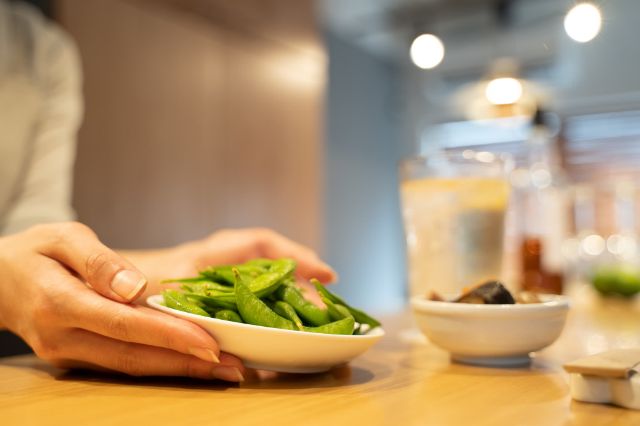
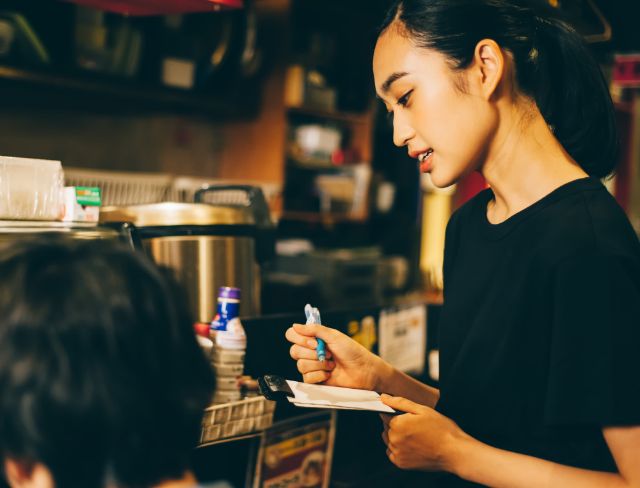
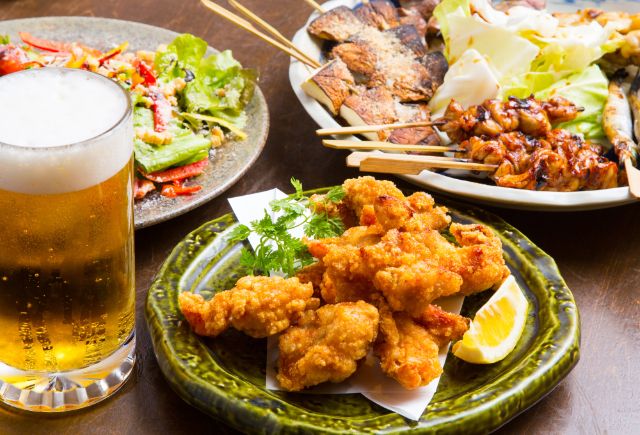
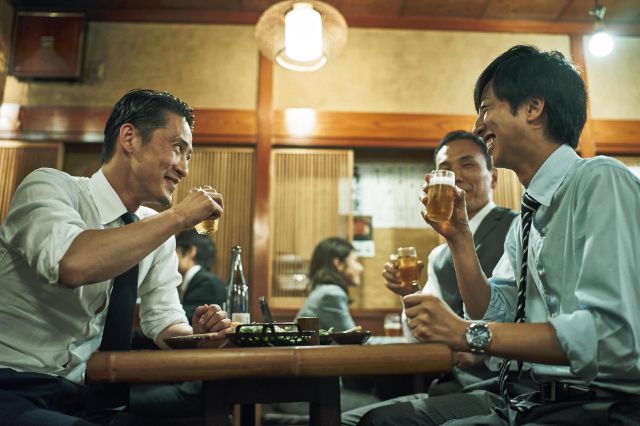

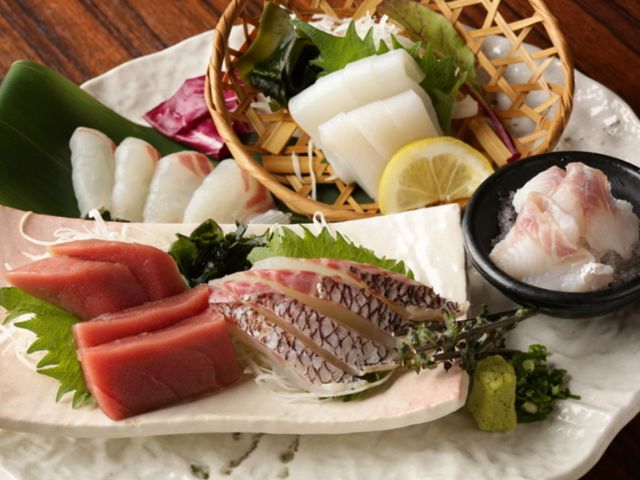
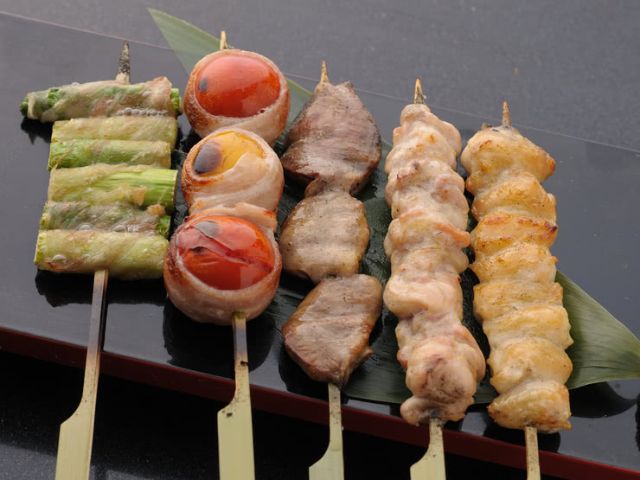
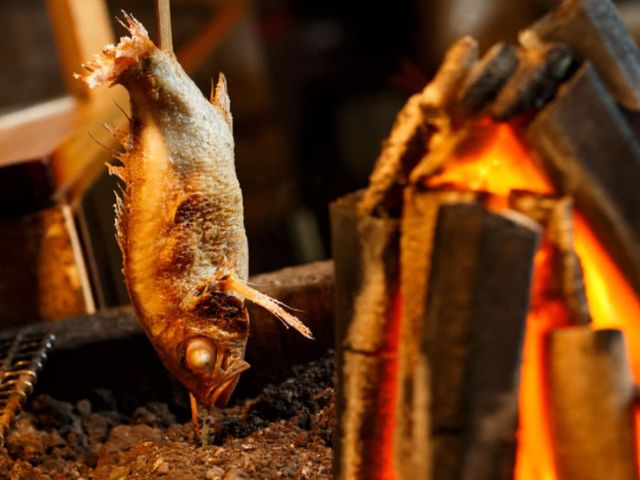
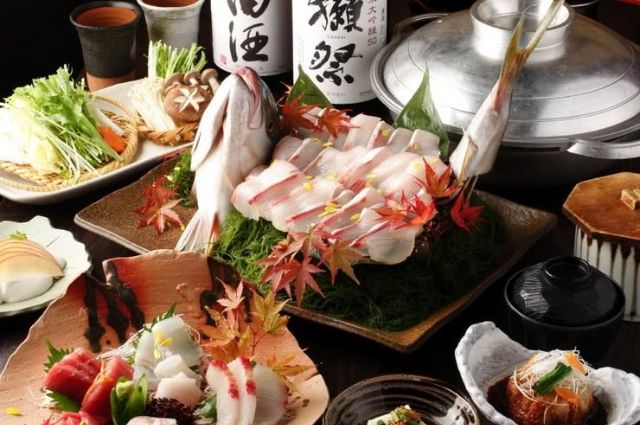
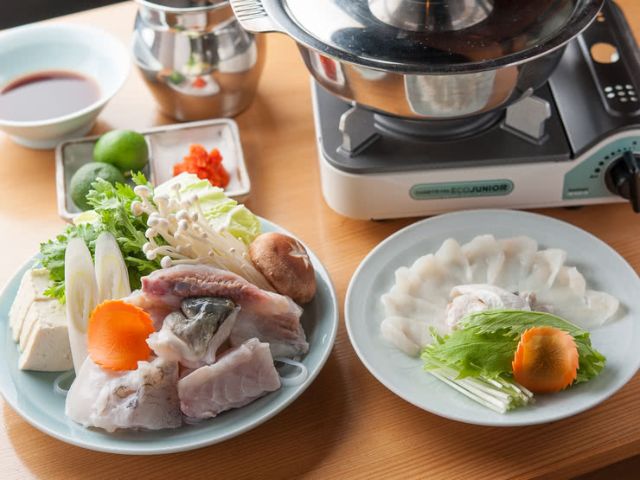

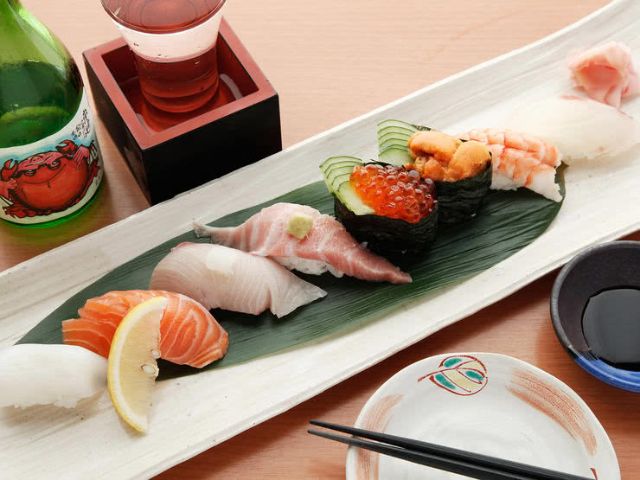
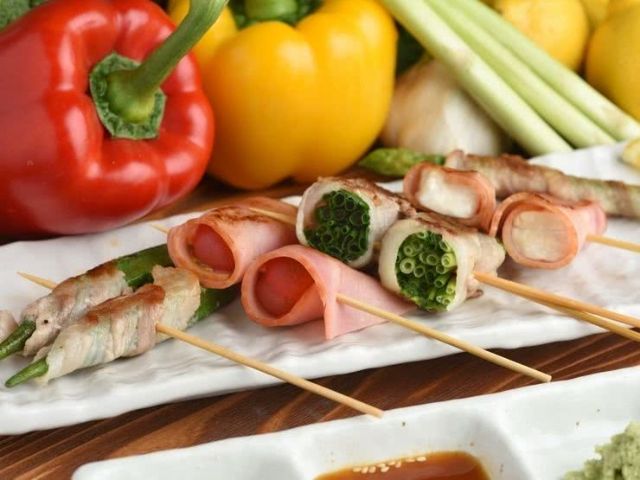
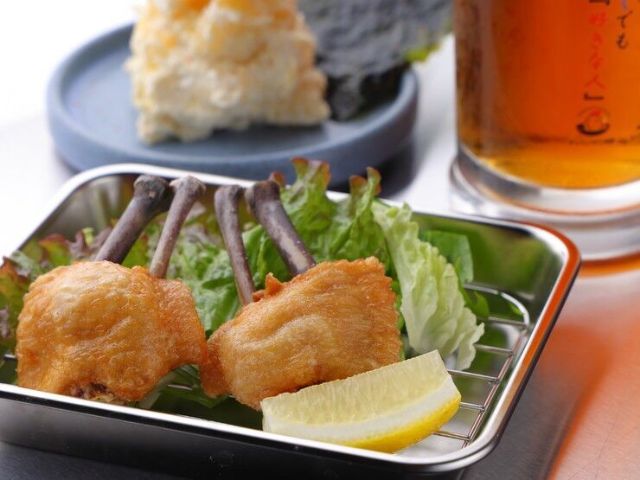
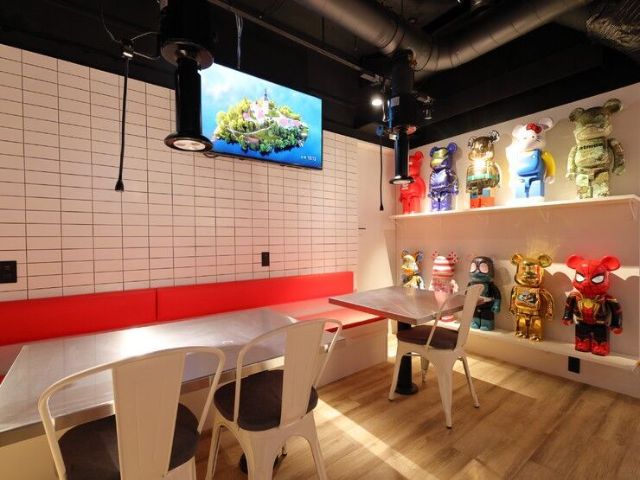









![Azabudai Hills [SUMI] (Janu Tokyo) ~ Editor's Afterword by the Editor-in-Chief of Japan's Gourmet Site](/gg/content_image//image/discover_oishii_japan/6536/article_head_150x105z.jpg)









